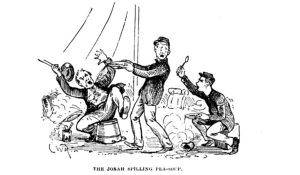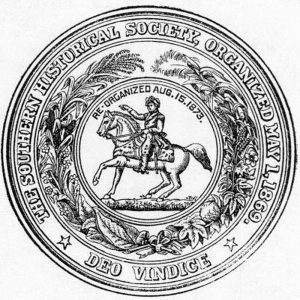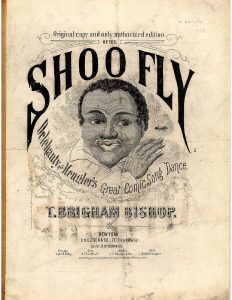Civil War Surprises: Was Pvt. John Hines A Surprisingly Uncommon Common Soldier?
In Chapter Six of former soldier John Billings’ famous Hardtack and Coffee, he identifies several types of soldiers he encountered during his service. Among them were the “Jonah,” named for the unfortunate Biblical character. A Jonah seemed to be able to make a mess of things wherever he appeared. Another class of soldiers, the “Beats,” included various types of individuals like, “rheumatic dodges,” “high-tempered men,” “paper-collar young men,” and other insufferables, who surely brought headaches to their company sergeants and officers.

Billings’ observations, of course, were from the Federal perspective, as he served in the 10th Massachusetts Battery. However plenty of examples from Confederate soldiers’ wartime letters and postwar memoirs provide abundant evidence of similar type characters among the rank and file of their armies as well. However, I recently came across mention of a particular Confederate soldier, who appears to have been about as surprisingly uncommon as Civil War common soldiers came.
While flipping through bound editions of Confederate Veteran magazine from 1894, I stumbled upon a six paragraph article in the November 1894 issue titled, “Strange Freak in the Army.” It began: “’Old Hines’ was an odd character, a member of the Second Company of Richmond Howitzers. He was short, squatty, stoop-shouldered, bow-legged, with an aquiline nose and cocked eye, deaf as a post, and at least seventy-five years old. Nobody knew whence he came or what was his nationality. He never talked; and never did any duty, either in camp or on the field.” Say what?!
The first paragraph alone brought to my mind a plethora of questions. I read on about this so-called odd soldier, which only added to his mysterious aura and my many questions. I had to see how much more I find out more about “Old Hines.”
An internet search did not result in much success, but it did help me find a much longer—and earlier—article about Hines in Volume 19 (1891) of the Southern Historical Society Papers. Its pseudonymed author, “Ex. Off.,” which I assume meant ex-officer, did not help much in my effort to gather and corroborate information. At the top of the five-page article, is a line that reads, “[From the Richmond Times, November 1, 1891.” I found the Richmond Times article on the Library of Congress “Chronicling America” newspaper database and it is the exact same article as the Southern Historical Society Papers article. In addition, the article in the Confederate Veteran appears to be an edited down version of the Southern Historical Society Papers/Richmond Times article. Long story short, it looks like the same person was the source of all the information in the three articles.

Before I share some of what was in the article, I’ll explain what I was able to learn about “Old Hines” from other records. I first went to see if Hines had a compiled military service record. He does, but unfortunately it is not very detailed and only contains five cards. John Hines was indeed a private in the Second Company of the Richmond Howitzers, as the article indicates. He enlisted on March 18, 1862, in Richmond. His enlistment came before Confederate conscription, so he definitely volunteered for service. Hines’ records also indicate he became a prisoner near Gettysburg on July 5, 1863, and received admittance to the U.S. General Hospital at Frederick, Maryland, two days later suffering from debilitas (weakness or feebleness). Hines’ hospital card additionally notes that he was 56 years old, not 75 as the article’s author perhaps exaggerated, and that he “transferred to Annapolis, Md.” Confusing an already murky matter, one card notes that he was not exchanged, while another card states he was exchanged and that after exchange he was absent without leave.
Back to the Southern Historical Society Papers/Richmond Times article: It opened that, “Lee’s immortal army contained many heroes, but only one “Old Hines,” and went on to identify his unit and gave a physical description of the soldier that is almost verbatim with what the Confederate Veteran uses and I shared above. However it provided some additional clue information. It added that “’Old Hines” had only two associates—Mills and Otto, two Germans—messmates of his, who spoke very little English but a great deal of Dutch.” Was Pvt. Hines German, too, or were the two Germans the only ones who would be Hines’ mess mates? Pvt. John Mills enlisted in the Richmond Howitzers the same day as John Hines did, but was captured at the Battle of Cedar Creek and spent the remainder of the war at Point Lookout prison in Maryland. I was unable to find an Otto (first name or last) in the Second Richmond Howitzers.

Turning my search to the 1860 census, I found a John Hines, who at that time was living in Portsmouth, Virginia, with the occupation of a “Seaman.” He was born in Hamburg (Germany) and his age was correct at 53 years old. It seems he could to be a fit! I located several John Mills among those living in Virginia, but none who were born in Germany.
Most of the rest of the article makes note of Hines’ numerous quirks and eccentric acts during the war. Apparently he “never talked at all and never performed any duty in camp or on the field.” When he was placed on guard “he would deliberately walk back to his mess. Remonstrances were in vain, he could not hear explanations out of order, he would not talk, put him in the guard house he was happy; release him and he was equally so.” The author noted that Hines hated shoes and that “his feet were as hard and tough as leather. When the boys wanted a little fun they would give ‘Old Hines’ a little ‘hard tack’ or some corn meal to induce him to dance out the fire of his mess.” Apparently this was hilarious to the other soldiers, but not his messmates “Otto and Mills, as they had to rekindle the fire.”
According to the author, Hines did not sleep much. He always “was up all night cooking and eating—he did all of the cooking and most of the eating for his mess.” Hines also seems to have loved the line, “Shoo, Fly, Don’t Bother Me,” from a popular period song and he went about “humming all the time in a low voice.” The minstrel song “Shoo, Fly, Don’t Bother Me,” was allegedly written during the Civil War by songster Thomas Brigham Bishop after hearing a United States Colored Troops soldier use the expression when being pestered by a comrade. The song was not officially published until after the Civil War. If Bishop did write the song after hearing a comment from a Black soldier, it is unlikely that Hines heard the song before the article’s author says he used the line. Obviously, this would be another dent in the credibility of the Old Hines story.

One wonders how Hines “never missed a battle or shirked a fight, but he never did any fighting” as is claimed. Instead of serving a gun or preparing ammunition, “When the fighting commenced he would begin to hunt for plunder all over the field. No danger daunted him, nothing came amiss in the way of clothing or camp equipage; friend and foe fared alike.” After he gathered a pile of battlefield requisitions, Hines “would seat himself on the ground in the most exposed situation near the battery, and calmly proceed to overhauling and mending the overcoats and other garments he had picked up, singing the while, ‘Shoo, Fly Don’t Bother Me,’” to the projectiles flying about him.
At Fredericksburg, where “Trees are battered and torn to pieces; horses maimed and mangled, are struggling in dumb agony over dead and dying men; caissons are blown up, guns dismounted and the earth rocks and trembles to the horse bellowing of artillery,” Hines seemed oblivious to the dangers. Amid all this, “on top of a perfect pyramid of overcoats, blankets, knapsacks, and frying pans, ’Old Hines’ was seated, with legs crossed, ‘tailor-fashion,’ sewing away for dear life, and right in range of a dozen batteries.” One of Hines’ overcoats belonged to the author who had taken it off “rather than lug it through the fight,” but Hines snatched it up and refused to return it. While pleading for it back “a shot from the enemy came bounding along, passing through two of the horses to the caisson, and not missing us very far. ‘Old Hines’ cocked up his eye at me, and with a grin and chuckle, said ‘Shoo, Fly, don’t bother me.”
When Christmas 1862 came around the Richmond Howitzers were in winter camp near Bowling Green, Virginia. Old Hines came up missing, along with all of his battlefield plundered goods. Some in the unit thought his mess mates had silently killed him, others thought he finally deserted. It turns out that Hines had rented a room in a Bowling Green hotel and was “living like a lord.” Officers found Hines, arrested him, and he “marched back to camp under the guard.” Court-martialed, the author noted Hines’ defense was that, “I don’t make no practice of leaving camp, but I allus keep Christmas—I allus does.” This one sentence for his defense was the most anyone had ever heard him speak. Receiving a guilty sentence, Hines had to remain in camp a week and wear a placard that read “Absent from camp without leave.” Receiving orders to move before his sentence was up, Hines and the Richmond Howitzers had marched about five miles before remembering he forgot his placard. He went back, retrieved it, and wore it long after his sentence was over “apparently delighted.”
The article’s author notes that serving on the Hines court-martial panel was “Major Henry S. Carter, a tobacconist, now of our city, then an officer in the Third Howitzers.” Searching the service records for the Third Howitzers, I located a Henry C. Carter, who’s highest rank was First Lieutenant.
Hines’ records indicate that he became a prisoner on July 5, 1863, near Gettysburg, but the author claims it occurred “Towards the latter part of the war.” The author related that “’Old Hines’ was a great mystery to his captors.” A comrade nabbed along with Hines allegedly told the author that the old man would “not tell what company, battalion, regiment, or corps he belonged to, because he never knew.” According to the author, Hines never took the oath of allegiance, while others did “to avoid the horrors of prison.” Hines though “remained true to his colors.” As mentioned above, Hines’ service records are unclear on whether he was exchanged or not. The author ends the article by stating that, concerning Hines, “it may be said there never was a poorer soldier, a greater plunderer, or a braver man.”
Exactly how much of Pvt. John Hines’ story in the Southern Historical Society/Richmond Times articles is true and how much is legend is difficult to know. It seems that someone of such eccentricities would have received numerous wartime comments from his comrades. However, unfortunately, there does not seem to be a significant amount of primary source material or memoir accounts surviving from members of the Second Richmond Howitzers to help corroborate or discredit the account under study. While Carlton McCarthy, author of Detailed of Minutiae of Soldier Life in the Army of Northern Virginia, did serve in the Second Richmond Howitzers, due to his young age, he did not enlist until November 1864, and thus would have missed serving with Hines.
If much of the account is true, was Hines’ acts of eccentricity a way of coping with his army environment? Although he did not seem to act odd in effort to avoid the dangers of the battlefield, it appears he did not like to perform soldierly duties. Why did his officers not dishonorably discharge a soldier who did not do his duty or contribute toward the unit’s effectiveness? Was Pvt. Hines suffering from some form of mental illness? If so, was it something he endured before his enlistment or did he develop it through his early war experience? Also, if true, did Hines die in prison? There are two John Hines in the Point Lookout Cemetery, presumably where he went, but both are from Virginia infantry regiments. If the majority of the Old Hines account is indeed a fabrication, what was the purpose in telling it, other than perhaps to “spin a yarn?”
Regardless of all the answers to the above, and numerous others, one has to wonder what ever happened to Pvt. Hines, because surprisingly, after all is said and done, all we definitely know, without additional evidence, is that he existed as a member of the Second Richmond Howitzers and became the focus of a dubious yet entertaining postwar tale.
Sources:
1860 U.S. Census, accessed via Ancestry.com
“A Confederate Veteran,” in Richmond Times, November 1, 1891, accessed via LOC Chronicling America.
“A Confederate Veteran,” in Southern Historical Society Papers, Vol. 19 (1891), Kraus Reprint Co., 1977.
Billings, John D. Hardtack and Coffee: The Unwritten Story of Army Life. George M. Smith & Co., 1888.
Bricklin, Julia. “The Minstrel Man: Thomas Brigham Bishop.” Accessed at https://www.historynet.com/minstrel-man-thomas-brigham-bishop/
Complied Military Service Records for Pvt. John Hines, Second Company Richmond Howitzers, accessed via Fold3.com.
Complied Military Service Records for 1st Lt. Henry C. Carter, Third Company Richmond Howitzers, accessed via Fold3.com.
McCarthy, Carlton. Detailed Minutiae of Soldier Life in the Army of Northern Virginia, 1861-1865. Reprint Time Life Books, 1981.
“Strange Freak in the Army,” in Confederate Veteran, Vol. II, No. 11 (November 1894).
1 Response to Civil War Surprises: Was Pvt. John Hines A Surprisingly Uncommon Common Soldier?